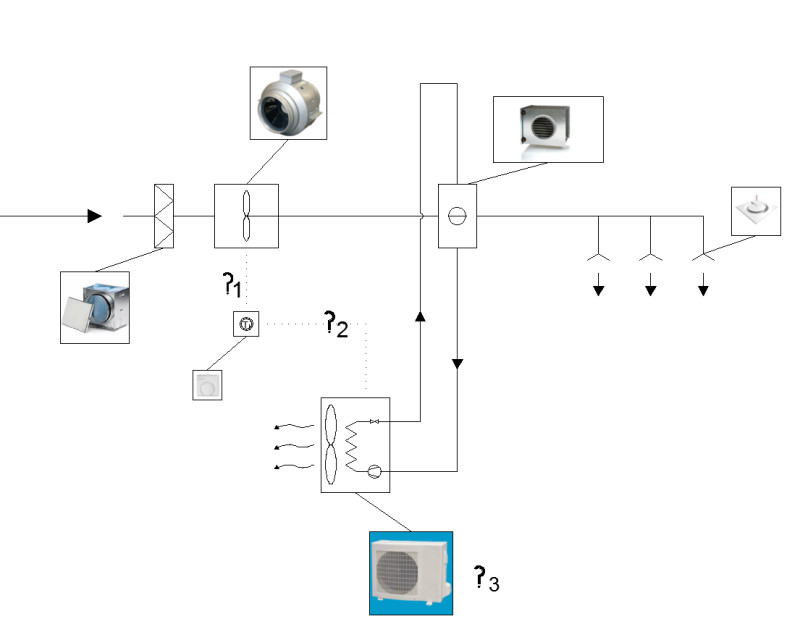Todrianth
Civil/Environmental
- Mar 17, 2014
- 9
Hi,
I would like to build my own cooling system by buying cheaper individual components (China), rather than paying for very expensive out of the box AHU solutions that charge insane up to 20x more just beacause of company name. I know how to do the ducting, install the fan and the filter, and all I need to do now is to build/buy a reduction from the rectangular section of the cooling coil to circular section of the ducts. Then I believe I have to link the cooling coil to an exterior unit, which cools the refrigerant passing through the cooling coil. I basically want to do a clasic split air conditioning system but without the split, instead using a duct cooling coil so I can distribute the cold air evenly throughout my space, without having to endure local high speeds from the split unit and uneven temperature distributions/delay.
So I was wondering if someone else tried it, that is to buy separate components and then weld the cooling coil with the exterior unit. Maybe modified second hand split air conditionend systems ?
About the automation I'm thinking that the outdoor unit should have an out of the box setting for refrigerant upper/lower temperature starting or closing the compressor. Regarding the fan I'm thinking to control it via basic indoor temp sensor. The part I haven't figured out is how to link the exterior unit on/off switch to the temperature sensor working in tandem with the fan.
Thanks!
I would like to build my own cooling system by buying cheaper individual components (China), rather than paying for very expensive out of the box AHU solutions that charge insane up to 20x more just beacause of company name. I know how to do the ducting, install the fan and the filter, and all I need to do now is to build/buy a reduction from the rectangular section of the cooling coil to circular section of the ducts. Then I believe I have to link the cooling coil to an exterior unit, which cools the refrigerant passing through the cooling coil. I basically want to do a clasic split air conditioning system but without the split, instead using a duct cooling coil so I can distribute the cold air evenly throughout my space, without having to endure local high speeds from the split unit and uneven temperature distributions/delay.
So I was wondering if someone else tried it, that is to buy separate components and then weld the cooling coil with the exterior unit. Maybe modified second hand split air conditionend systems ?
About the automation I'm thinking that the outdoor unit should have an out of the box setting for refrigerant upper/lower temperature starting or closing the compressor. Regarding the fan I'm thinking to control it via basic indoor temp sensor. The part I haven't figured out is how to link the exterior unit on/off switch to the temperature sensor working in tandem with the fan.
Thanks!

